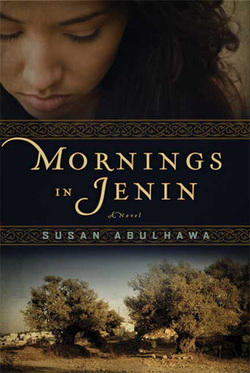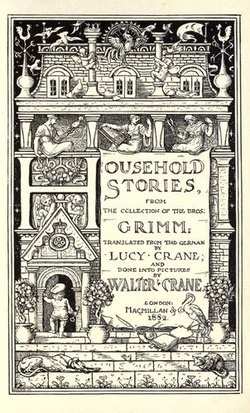I don't have a specific book for you today, but I have something better. Teach a man to fish and all that. When sitting around contemplating what to read next, we can all now go to Book Country for some guidance. You select a genre of interest from the genre map, and it will provide you with a list of "landmark" books of that genre. For example, "medical thiller" suggests The Cobra Event, The Fifth Vial, Harvest, Grievous Sin, and others. You can also open a secondary chart that rates the tone of each book. Are you in the book for a light and funny medical thriller? Or maybe a realistic, sexy one? Click on the "L" and it will tell you which of the recommended landmark books match your book. On the off chance I reach the end of my "Want to Read" list on goodreads and $0.99 books from amazon, I know where I will head for a recommendation.
 New Scientist reports that a pharmaceutical company has developed a machine that can tell you what virus, bacteria, or fungus is making you sick. The machine is called the Plex-ID universal biosensor. In the simplest terms, saliva or blood goes in, and a determination of the offending pathogen comes out. The process current takes 8 hours, but a new machine under development can do it in five. Aside from the total Star Trek nature of this (Computer - Please scan the patient and determine what is making them sick), it is awesome because it could allow doctors to prescribe the right medication for the culprit. Theoretically, patients will feel better faster and the development of antibiotic resistance bacteria will be slowed.
So, how does it work?
So, sure, it takes a long time, our database is somewhat limited, and you do have to extract blood or saliva, but this is still pretty rad.  Mornings in Jenin is the story of three generations of of family in Palestine from just after the end of World War II to the present. It is a story of birth and death, love and hatred, revenge and forgiveness, loyalty and betrayal. It is a story of how there are no concrete lines between them.
As an educational read about the Palestinian perspective of the Israeli/Palestinian conflict, this book is excellent. I know embarrassingly little about the what, when, and hows of the history let alone the whys. I felt like I could breathe the dust, feel the cold, and hear the wailing of loss inside this novel. As a novel, I struggled with it a bit. The switch between the perspective of an external narrator to the perspective of various characters in the novel was distracting. The overall story is that of endurance and finding joy in the midst of ever present loss, vignettes of various characters lives, and how they intertwine. It is a snapshot trying to portray realistic life. There is no story or plot in the traditional sense. As such, I didn't really get emotionally invested in the characters. There was nothing in the story to pull for other than the end of the violence. That said, I did fine the part where the main character lives in the US interesting/revealing. The total isolation she feels due to the different culture, but also the complete inability the relate to peoples worry over small, everyday things having lived through war. What is it to her for the convenience store she is working in to be held up by a boy with a handgun and shaky hands when she has had much scarier men aim much scarier guns at her with actual in Long Story Short: The writing is beautiful. If you've never asked yourself how a people who had just survived a genocide could teach hatred and commit war crimes, you should read this novel. Likewise if you've wondered what kind of despair could lead someone to think being a suicide bomber might be a good idea. I am a fairly practically minded person. I studied mechanical engineering in school. Houses, people, and giant earthworms are about the size of things I understand. When it comes to contemplating the very, very large or the very, very small, I get nervous. I sing cartoon theme songs from my childhood in my head.
But someone out there in interweb is made of stronger stuff then I am. Check out this amazing tool to experiment with the Scale of the Universe. You can move the slider bar and learn about the what things out there are what size. It is astonishingly well done, and didn't inspire me to even a single chorus about ninja turtles.  I am taking an online course through Coursera on Science Fiction and Fantasy literature. This was the first week and the assignment was to read Household Stories from the Collection of the Brothers Grimm. You can download it to sent it to your e-reader for free from Open Library.
The Grimm fairy tales is one of those things that I have always meant to read, but have never quite made it through. Admittedly, I still had to force my way through this, but I'm glad I can check the box. Fairy tales are totally up my alley of the type of thing I would expect to like, hence why I signed up for a Sci Fi/Fantasy class. And so many widely loved stories (Snow White, Sleeping Beauty, Cinderella, Tom Thumb, Hansel and Gretel, Little Red Riding Hood, etc) are adaptions of these stories. So why do they still leave me cold? Struggle #1: I've never been much of a fan of short story anthologies. I like to get involved with a character, and with short stories I tend to feel like they are over as soon as they start to get interesting. Struggle #2: The women in most of these stories are pretty lame. The tales are in essence morality tales and the traits that they value in nice young women are beauty, obedience, and simpleness. Not surprisingly, these characters don't really resonate with me. That said, some of the stories that do not involve princesses have women with some ingenuity, but overall not so much. Struggle #3: The characters in the stories rarely exhibit any emotions or learn from their mistakes. There is a tool for creative writers to help come up with story ideas - Storymatic. Once you pick out the story elements, there is only one rule. The main character must change in some way from the beginning to the end. Most of the Grimm tales fail this test. The characters are what they are. Events occur, circumstances change, but the characters don't. I don't want to read about a series of events happening to a robot. I want to read about people, and people are nothing if not emotional. Even if they can't overcome their circumstances in the end, they will feel things about it, and the Grimm tales as written don't include that aspect. I think #3 is really the hold-up for me. When I think about the stories that you know - Snow White, Sleeping Beauty, etc - I think about stories that take longer to tell than a couple of pages. When they were adapted for a modern audience, all those intermediary details were added. Cinderella may still be a weeny princess who doesn't stick up for herself and waits to be rescued by the prince, but at least she feels emotional about the experience. I'm curious how much of these details would have been improvised by a particular bard when the stories were oral or if the need for the emotional handwringing aspects of the stories are a modern need. |








 RSS Feed
RSS Feed